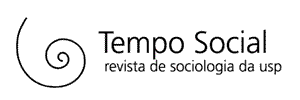Resumos
O autor discute neste artigo a crescente sofisticação e multiplicação da aparelhagem ótica (lentes, óculos, binóculos, lunetas, lupas, etc.) que, juntamente com a também crescente parafernália conceptual dos teóricos da estética, da lingüística e da crítica das artes visuais, interferem no prazer de olhar e na degustação da pintura. O autor propõe que a palavra prazer seja tomada ao pé da letra, porquanto não existem óculos mágicos que permitam olhar um quadro como um conceito. Constrói um modelo descritivo estendendo ao prazer artístico a análise platônica da heterogeneidade interna do prazer, com o objetivo de interpretar a experiência que se declara e se vive enquanto experiência artística como o resultado de uma mistura de componentes heterogêneos, cuja síntese e impossível.
Arte; pintura; olhar; olho; ótica; estética; percepção estética; expenência estética; gosto plástico; prazer artístico; artes plásticas; artes visuais
In this article his author discusses the growing sophistication, and multiplication of optical equipments (lenses, glasses, binoculars, spyglasses, magnifying glasses, etc.) that take place at the same time that the also growing development of the conceptual paraphernalia of theories of Esthetics, Linguistics, and Visual Arts Criticism. Both movements change the pleasure of looking, and the enjoyment of a painting. The author proposes that the word pleasure is to be taken verbatim, since there are not magical glasses that allow us to look at a painting as though it were a concept. He builds up a descriptive model by expanding the platonic analysis of inner heterogeneity of pleasure to the artistic pleasure, with the aim of interpreting the experience that declares itself and is lived like an artistic experience as the result of a mix of heterogeneous components, whose synthesis is impossible.
Art. Painting; looking; eye; Optics; Esthetics; esthetic perception; esthetic experience; plastic taste; artistic pleasure; plastic arts; visual arts
Texto completo disponível em PDF.
REFERÊNCIAS BIBLIOGRÁFICAS
- ADORNO, Theodor W. Aestlietisclie Theorie. In: ______. Gesammelte Schriften, 1,7. Frankfurt, Suhrkamp Verlag, 1970.
- BAKHTIN, Mikhail. Esthétique et théorie du roman. Paris, Gallimard, 1978.
- BOURDIEU, Pierre. L’amourde l’art. Paris, Minuit, 1970.
- GOMBRICH, Emst. L'écologie des images. Paris, Minuit, 1983
- JAKOBSON, Roman. Essais de linguistique générale. Paris, Minuit, 1963
- ______. Questions de poétique. Paris, Seuil, 1973.
- JAUSS, Hans Robert. Pour une esthétique de la réception. Paris, Gallimard, 1973.
- KRIS, Emst e KURZ, Otto. L 'iniage de 1’artiste: légende, mythe et magie. Paris/Marseille, Rivages, 1987
- LOTMAN, Iouri. La structure du texte artistique. Paris, Gallimard, 1973.
- MALRAUX, André. Le Musée imaginaire. Paris, Gallimard, 1957.
- PANOFSKY, Erwin. L 'oeuvre d'art et ses significations. Paris, Gallimard, 1969.
- ______. Essais d'icolonogie. Paris, Gallimard, 1967.
- RIEGL, Aloís. Grammaire historique des arts plastiques. Paris, Kincksieck, 1978.
- ______. Le culte modeme des monuments. Paris, Gallimard, 1984.
- RIFFATERRE, Michael. Essais de stylistique structurale. Paris, Flammarion, 1971.
- SCHAPERO, Meyer. Style, artiste et société. Paris, Gallimard, 1982.
- WTTTGENSTEIN, Ludwig. Leçons et conversations sur I'esthétique Paris, Gallimard, 1971
Datas de Publicação
-
Publicação nesta coleção
Jan-Dec 1991
Histórico
-
Recebido
Jul 1991

